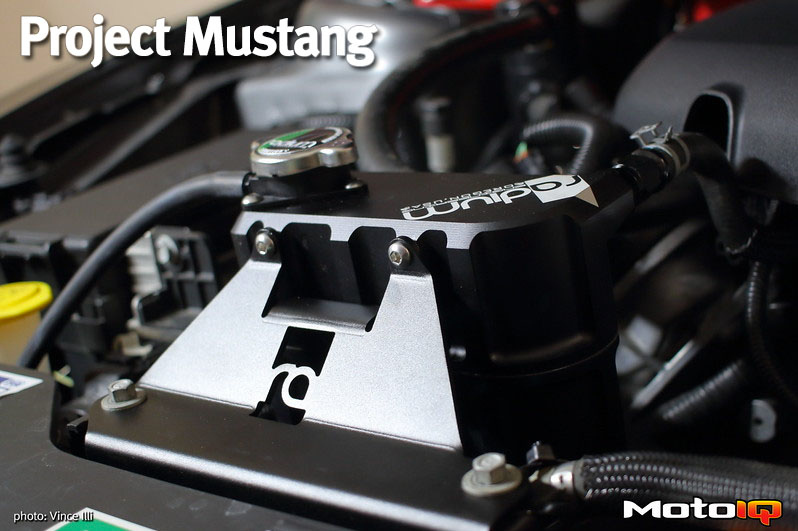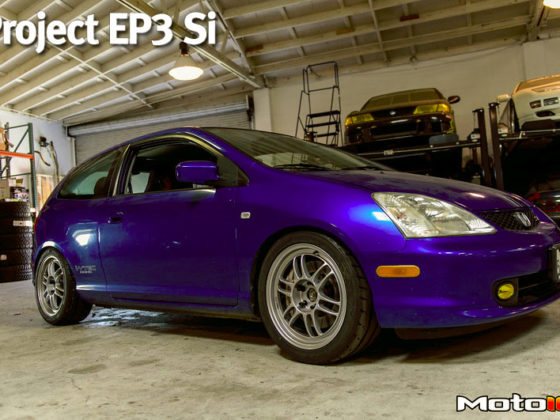
Tested: Radium Engineering Coolant Expansion Tank
Recently, Radium Engineering began to release vehicle-specific kits for their universal billet aluminum coolant expansion tank. These kits include the expansion tank and associated bracketry and AN fittings to easily install the kit into your vehicle without having to perform any custom work or irreversible modifications. Radium sent us their kit for 2011-2014 S197 Mustangs to test out on our Grey Project Mustang 5.0. But before we get to the installation, let’s talk a bit about how a coolant expansion tank works!

How a Coolant Expansion Tank Works
As coolant heats up, it expands. If we limit the volume of this coolant (by sealing the system), we can build pressure in the system. A coolant system is pressurized to increase the boiling point of the water and squeeze any steam or air in the system into smaller bubbles to increase the available surface area of the coolant. The system’s pressure is limited by the pressure cap (also known as a radiator cap). The pressure cap consists of a spring and a gasketed “plunger.” When the system’s pressure exceeds that of the spring, the plunger is pushed up, and a small amount of coolant (or air or steam) escapes until the pressure comes back down to the designed limits.

On older cars, the pressure cap was always on the top of the radiator (hence the term radiator cap). This meant that the top of the radiator had to be above the cylinder heads of the engine to enable any air or steam in the system to escape. (Fun fact: the radiator cap on an old Ford Model A was high enough to be in the driver’s vision. It actually had a mercury thermometer on the back of it so the driver could monitor the engine’s temperature.) As you can imagine, this somewhat limited the available designs of a car and is at odds with wanting to put weight as low as possible on the chassis.
To fix this issue, most modern cars have started using a Coolant Expansion Tank. Essentially, the coolant expansion tank moves the “top” of the radiator to another location in the engine bay. This allows the use of a shorter radiator “below” the top of the engine while still enabling air and steam to be purged.
There are other advantages to a coolant expansion tank, as well. In order to maximize the surface area of the radiator being used, the radiator must be as full as liquid as possible. There is no room at all for air in this system. On a system with the pressure cap mounted on the radiator, if the maximum pressure is reached, liquid must be purged from it into an unpressurized container outside of the system (the overflow tank). As the system heats and cools, it must continually add and remove liquid from the overflow tank. This is an inefficient design that reduces the available coolant when the engine is at its hottest!
In contrast, the expansion tank allows some air to be in the system, at the top of the tank. It allows the coolant to expand (hence the name) and purges air out of the system instead of coolant. (This deaeration leads to some manufacturers calling the expansion tank a De-gas Bottle.) This lets the radiator stay completely full of liquid coolant while allowing room for the coolant to expand.

Three lines run to and from the expansion tank. The first is a steam line that comes from the highest point of the engine. This line removes air and steam from the engine and directs it to the expansion tank where it can be purged from the system. The radiator vent line comes from the highest point of the radiator and serves a similar purpose to the steam line; it purges air and steam from the radiator. Finally, a third line—the return line—comes from the bottom of the expansion tank goes to the inlet of the coolant pump.
Now that we’ve discussed the purpose and operation of the coolant expansion tank, let’s take a look at Radium Engineering’s expansion tank!



